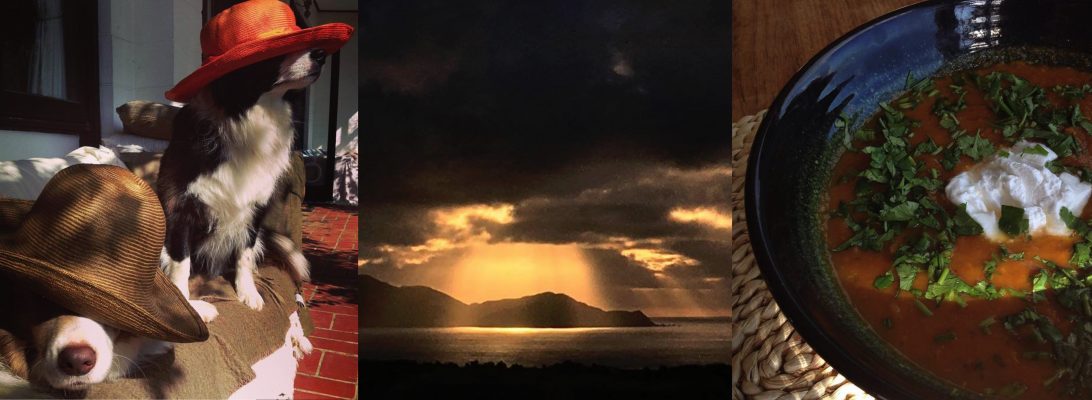This past weekend, I spent a few very happy days with much loved friends at a wedding in the Marlborough Sounds. We swam at night in the glowing phosphorescence in deep crystal clear water. Ate hot chips, sitting on the wide verandah of the hotel. Hooted with laughter, as we watched the boys debate the best way to decorate the marquee with leftover buttery yellow tulle from the bridal dress. And we got all teary eyed watching the stunningly beautiful bride walk down the aisle with her father.
But today, back in Wellington, a fellow midnight swimmer and I sat quietly in a café, hanging out before she jets back to Seattle and I told her I was feeling oddly emotionally tired given that I’d just been on holiday for 3 days.
Whilst there was plenty of hilarity there was also a sense of poignancy to the wedding. Several guests from Christchurch were unable to make it, although, thankfully not due to loss of life and Christchurch was never far from our thoughts. Knowing, that as we sat eating our hot chips on the verandah, only a couple of hundred kilometres south from where we sat, one of New Zealand’s main centres lay in ruins.
I am, I have to say, feeling a little shaken and a little stirred.
I was born and bred in, live in, the city everyone expected to be the one that was hit. Not Chch. It’s not if, but when, they’ve been telling us all my life.
Honestly, I get the whole there’s no point in dwelling in ‘what ifs’ and I understand that luck (or lack thereof) has a really big part to play in the whole thing, but I have to say that it is making me look at buildings in a new light. As I read in an excellent article this morning, it’s not earthquakes that kill people, it’s buildings.
And I don’t think it’s my imagination, but I sense a sadness and a subtle – or at least it’s subtle here in Wellington, I have no doubt that in Christchurch there is nothing remotely subtle about it – loss of nerve in our collective consciousness. It will fade, in time, but before it does I’m hoofing off to the Warehouse and Pak & Save to finally sort out an emergency kit.
In the meantime, I’m going to take the advice of my wise 3 year old goddaughter. Her Mum (one of those beloved friends with whom I shared hot chips with very recently) told me that on being told she would be missed this past weekend, Miss 3 year old replied ‘but you’re happy now‘, or something to that affect. I reckon there’s a great deal to be said for that approach.
So yes, it IS very sensible to be prepared. The reality is we live in the land of the long white cloud which is perched on the edge of two tectonic plates. It is natural to feel sad when your community is profoundly affected by tragedy. But we can also appreciate the Now. Laugh out loud with much loved friends. Skinny dip at midnight. Sit on a verandah and eat hot chips in the sun.










